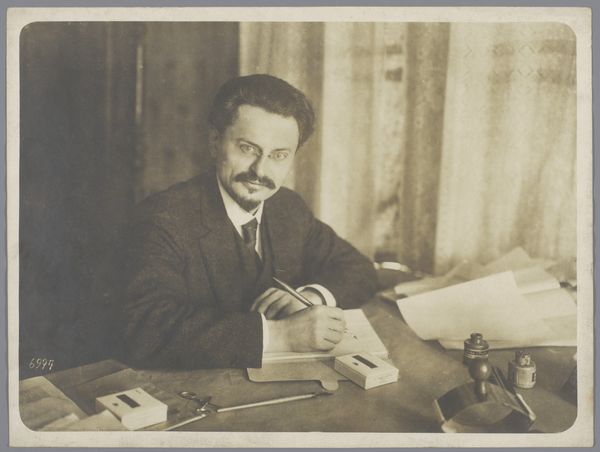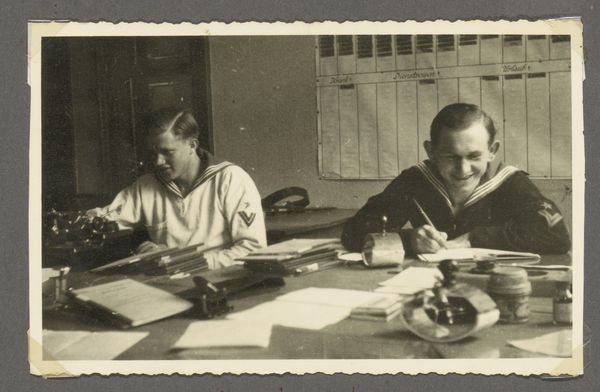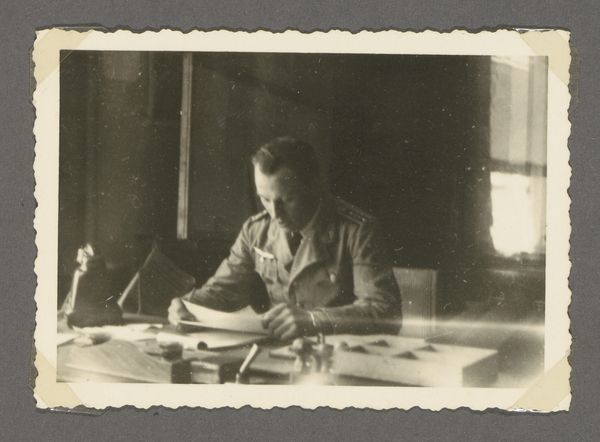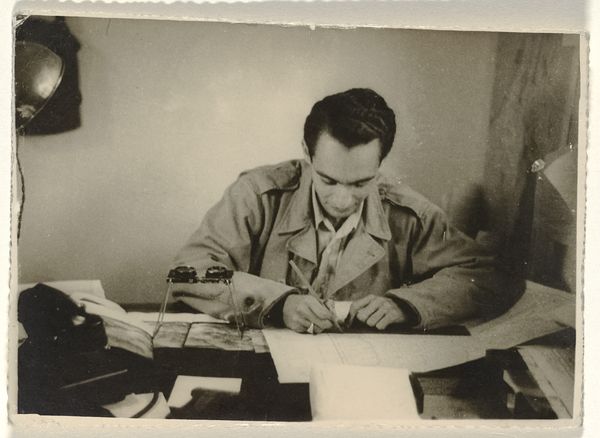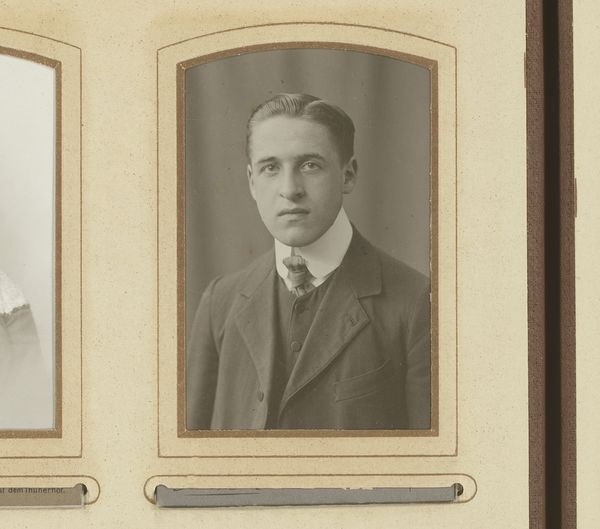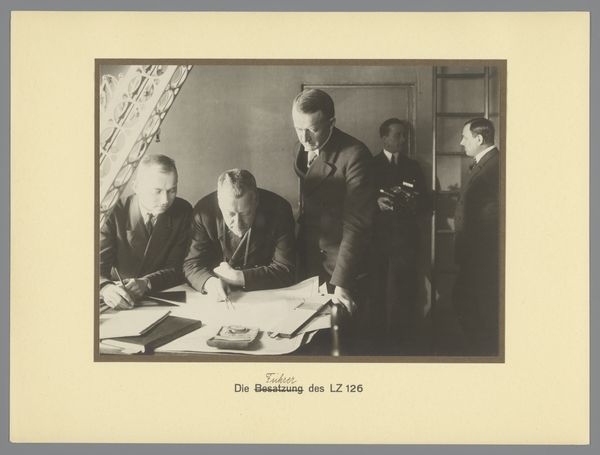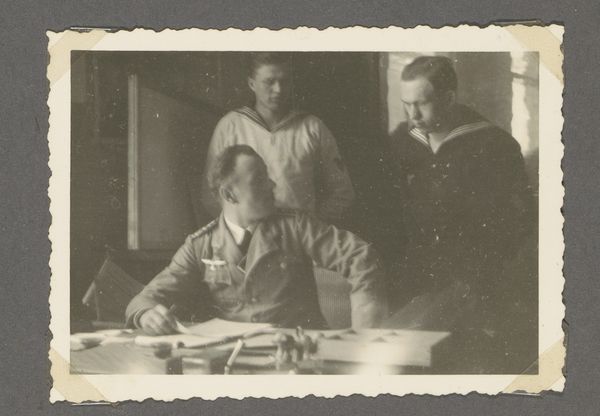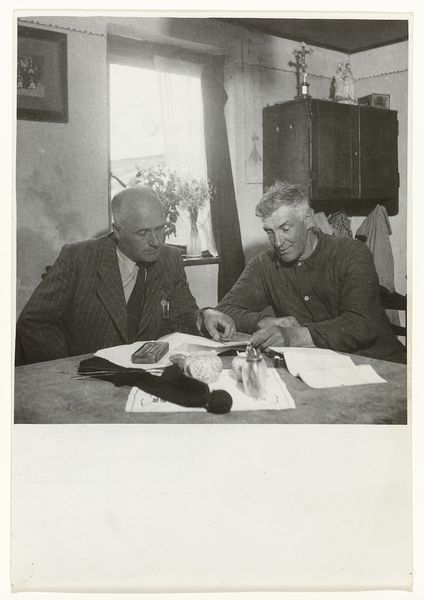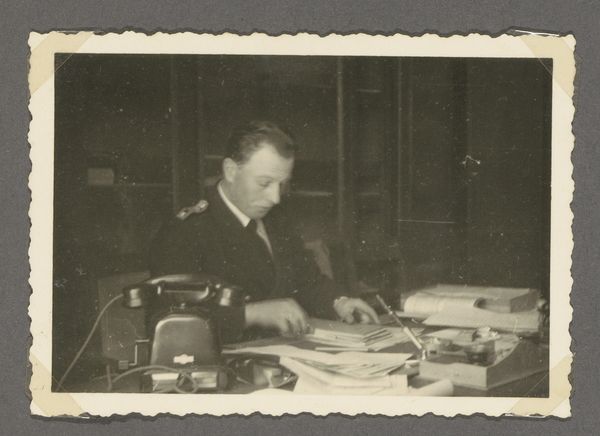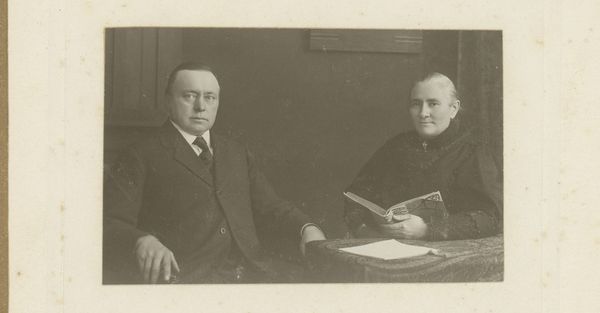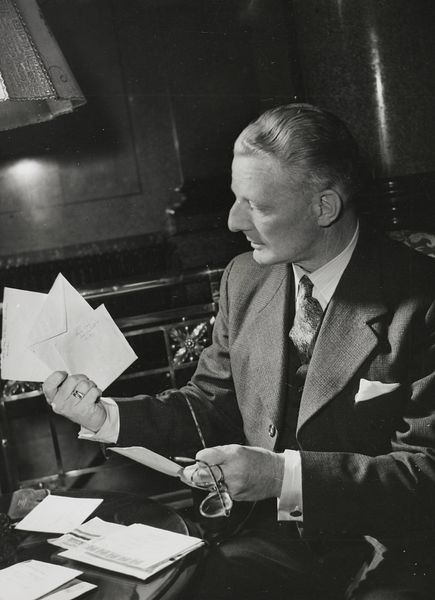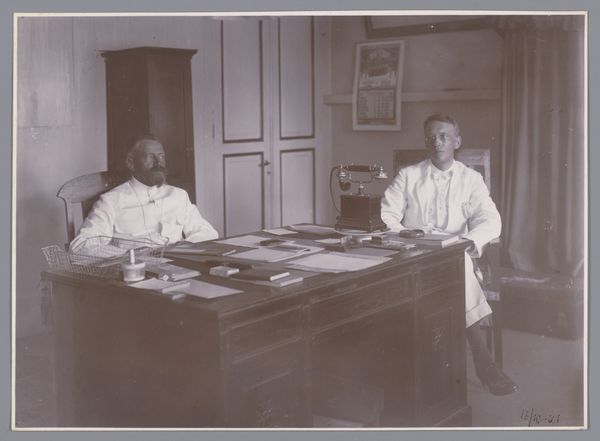
Johannes van Zijll de Jong en een onbekende man zittend aan een schrijftafel 1930 - 1935
0:00
0:00
photography
#
portrait
#
photography
#
genre-painting
Dimensions: height 61 mm, width 80 mm
Copyright: Rijks Museum: Open Domain
Editor: So, here we have an untitled photograph, likely taken between 1930 and 1935. The subjects are Johannes van Zijll de Jong and an unidentified man seated at a desk. It's quite a formal portrait, almost staged in its stillness. What strikes you when you look at this photograph? Curator: I'm immediately drawn to the performativity of labor captured here. The men are positioned, pen in hand, seemingly in the act of writing, yet there's a palpable sense of constructed-ness. It begs the question: what narrative are they trying to project about themselves, about work, and about their position in society during this interwar period? What does it mean to be seen "working"? Editor: That's fascinating! It does seem like they are performing. Is this kind of staged representation common for this era? Curator: Absolutely. Photography in the early 20th century, especially portraiture, often served as a tool for social climbing or to create a legacy. Think about the socio-economic context. The burgeoning middle class were keen on visually asserting their place. What’s interesting here is the intimate yet slightly alienating quality of the photograph. Are we invited in, or are we kept at a distance, observing their carefully curated performance? Editor: It's true, there's something distancing about it. I hadn't considered the idea of social performance so explicitly. Curator: Consider the trappings of office in play; the suits, the meticulously arranged table, the patterned wallpaper. These elements, while seemingly innocuous, serve to construct a narrative of authority and industry. Are these visual cues also reflective of gender and the professional man in 1930's? Editor: I see what you mean. It's not just a portrait, it's a carefully constructed image with all these implied meanings. Thanks, that's given me so much more to think about. Curator: Indeed! Analyzing such details helps us unravel the complexities embedded in seemingly simple representations. I wonder, does this staged image resist or support social normalities?
Comments
No comments
Be the first to comment and join the conversation on the ultimate creative platform.
